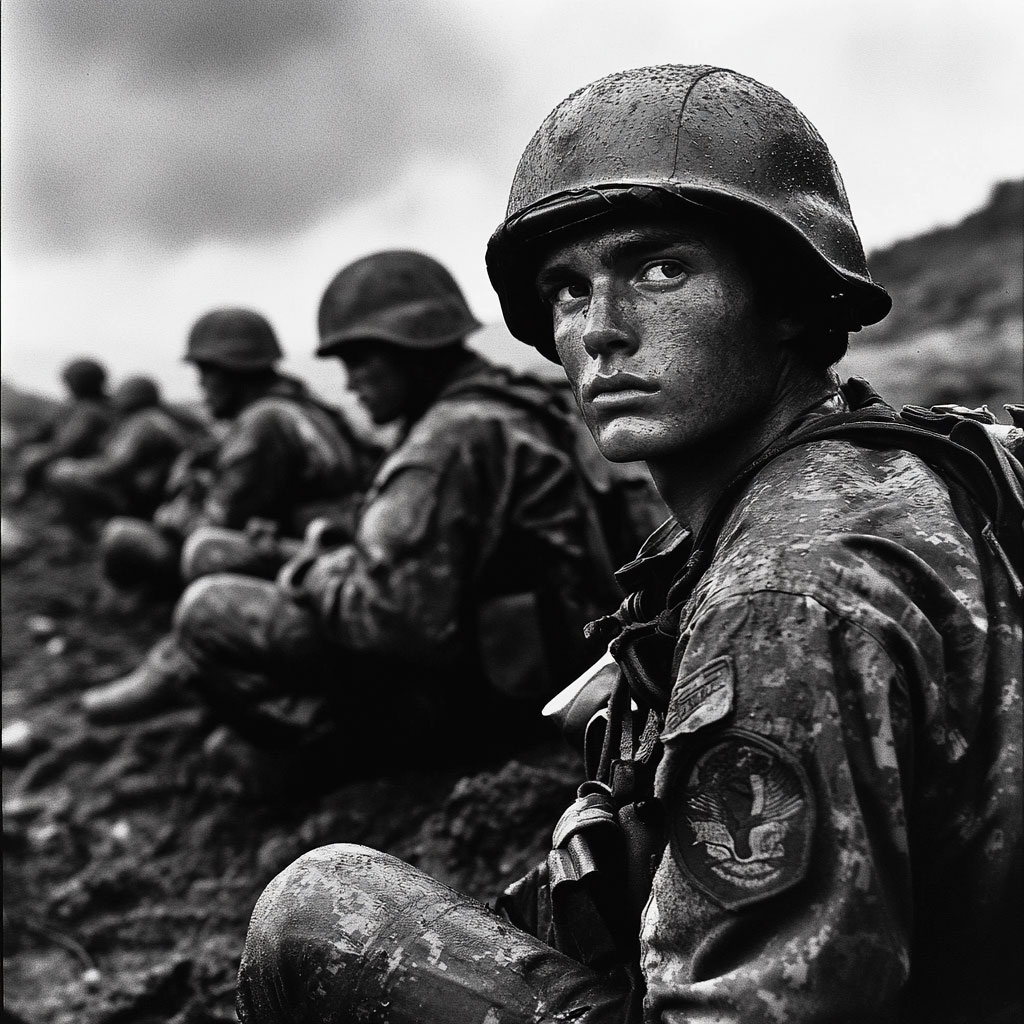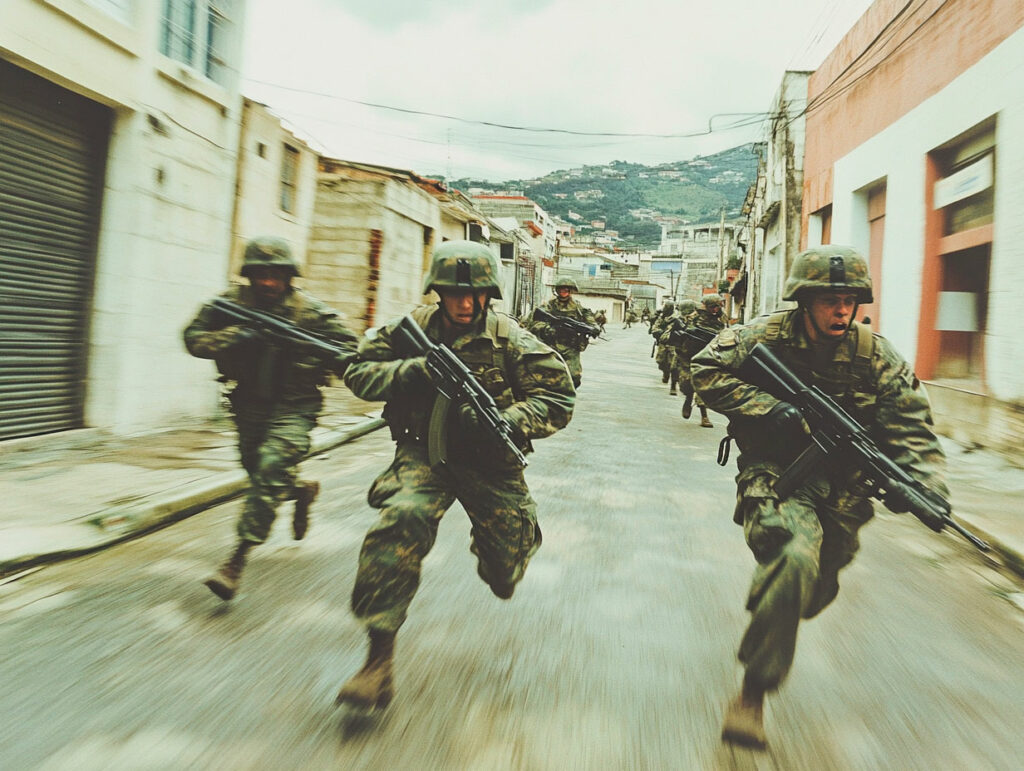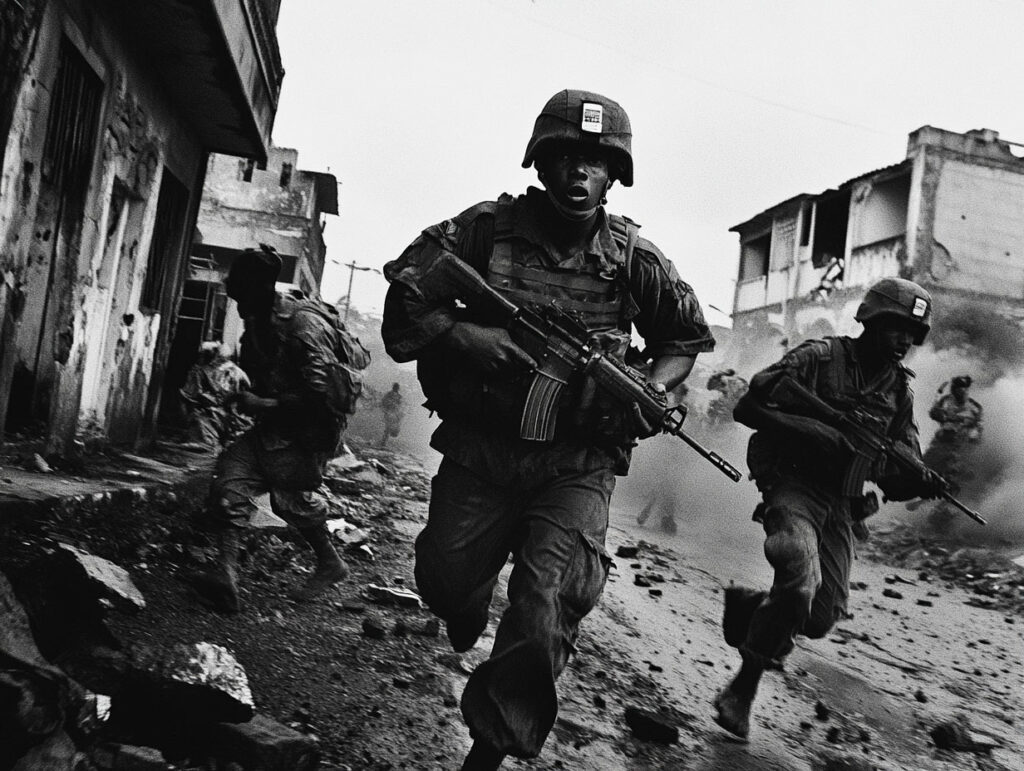A detailed breakdown of the 1983 US invasion of Grenada, covering causes, key figures, battles, outcomes, and international consequences.
The US invasion of Grenada, code-named Operation Urgent Fury, began on October 25, 1983. The objective was to remove a Marxist-Leninist regime that had taken power after a violent coup and to evacuate American medical students from the island. The military operation involved nearly 8,000 US troops supported by forces from six Caribbean nations, against a combined force of around 1,500 Grenadian and Cuban personnel. Within seven days, the US declared the operation complete. The invasion was condemned by the United Nations General Assembly, but it gained domestic support in the US. The intervention reshaped regional security policies, influenced future US military planning, and strengthened Reagan’s presidency. It also led to the restoration of a pro-Western government in Grenada and the withdrawal of Cuban influence from the island.
What were the reasons for the US invasion of Grenada (1983)
The US invasion of Grenada in 1983 was the result of a series of political developments, both internal to Grenada and in the broader geopolitical context of the Cold War. The primary reason cited by the Reagan administration was to protect the lives of approximately 600 American students studying at St. George’s University School of Medicine. After a military coup on October 19, 1983, the government of Prime Minister Maurice Bishop was overthrown and Bishop was executed by radical Marxist elements led by General Hudson Austin. The Revolutionary Military Council, formed afterward, declared martial law, closed the airport, and restricted movement on the island.
Another key motive was the concern over Soviet and Cuban influence in the Caribbean, which the US perceived as a growing threat. The presence of approximately 780 Cuban construction workers and military personnel, involved in building a 3,000-meter airstrip at Point Salines, raised suspicions in Washington. The US argued that the airstrip could facilitate Soviet and Cuban military operations in the region.
Regional governments, particularly in the Organization of Eastern Caribbean States (OECS), requested US assistance. The OECS, along with Barbados and Jamaica, formally appealed for intervention, giving the US diplomatic cover for the operation. The Reagan administration also saw this as an opportunity to send a strong anti-communist message globally.
Additionally, the US was influenced by a perception of vulnerability after the 1983 Beirut barracks bombing on October 23, which killed 241 American servicemen. The invasion two days later allowed the US to reassert military confidence and distract public attention.

Who was involved in the US invasion of Grenada (1983)
The invasion was spearheaded by the United States, which deployed a combined force of nearly 8,000 personnel from the Army, Navy, Air Force, and Marine Corps. Supporting forces came from six Caribbean nations: Barbados, Jamaica, Dominica, St. Lucia, St. Vincent and the Grenadines, and Antigua and Barbuda. These countries contributed around 300 troops, primarily for symbolic political support and logistical roles.
The defending forces included the People’s Revolutionary Army (PRA) of Grenada, with approximately 1,200 personnel, and an estimated 780 Cuban workers, most of whom were military engineers or construction troops armed with AK-47s and anti-aircraft weapons. Some reports suggest that a subset of the Cubans had combat training and were tasked with defending the Point Salines airstrip and nearby infrastructure.
US military units included the 82nd Airborne Division, 75th Ranger Regiment, Marine Amphibious Units, and Navy SEALs. Air support came from AC-130 gunships, F-14s, F-4 Phantoms, A-7 Corsair II attack aircraft, and UH-60 Black Hawk helicopters. Naval support included aircraft carriers like USS Independence (CV-62) and various amphibious assault ships.
The Caribbean Peace Force, though lightly armed and small in number, played a role in policing and stabilization tasks once major combat operations had ceased.
From a political standpoint, the Reagan administration coordinated the operation with the Joint Chiefs of Staff, State Department, and CIA, although inter-agency coordination was later criticized for inefficiencies.
The Grenadian side was led by General Hudson Austin, head of the Revolutionary Military Council, which had seized power days before the invasion. Cuban military attachés were also present and reportedly involved in directing resistance, though Havana later downplayed their combat role.
The engagement reflected a multi-layered conflict involving US-led intervention forces, local revolutionary units, and foreign military personnel aligned with Cuba and, indirectly, the Soviet bloc.
The leaders of the US invasion of Grenada (1983)
On the American side, the key political leader was President Ronald Reagan, who authorized the operation and justified it as a mission to rescue American citizens, restore order, and limit Soviet-Cuban expansion. He made the decision in consultation with Secretary of Defense Caspar Weinberger, National Security Advisor Robert McFarlane, and Chairman of the Joint Chiefs of Staff General John Vessey.
The overall military command was led by Vice Admiral Joseph Metcalf III, commander of the Second Fleet, who was placed in charge of Joint Task Force 120. His subordinate commanders included Major General Norman Schwarzkopf, who served as a deputy commander and later gained prominence during the Gulf War. Schwarzkopf coordinated complex joint operations involving air, sea, and land components.
Brigadier General Richard Scholtes, commander of the Joint Special Operations Task Force, oversaw the operations involving Navy SEALs and Delta Force units. These units were tasked with securing critical infrastructure and gathering intelligence in the early hours of the invasion.
On the Grenadian side, General Hudson Austin led the People’s Revolutionary Army and controlled the island’s limited defenses. He had seized power just six days before the invasion, following the execution of Prime Minister Maurice Bishop by a radical faction of the New Jewel Movement. Austin’s position was weakened by internal discord and a lack of coherent planning for external aggression.
The Cuban contingent in Grenada operated under Colonel Pedro Comas, who organized a defensive perimeter around the Point Salines airstrip and coordinated Cuban resistance to the US landings.
While the American command hierarchy was well-established, poor communication between US branches initially led to friendly fire incidents, including the death of a Navy SEAL team and near-misses with close air support. These issues later influenced the 1986 Goldwater-Nichols Act, which restructured command authority across military services.
Despite the short duration of the conflict, the leadership structure on both sides played a critical role in determining how quickly the situation developed and how resistance was overcome.

Was there a decisive moment?
A decisive moment in the US invasion of Grenada came during the seizure of the Point Salines International Airport on October 25, 1983, the first day of the operation. This site was of strategic importance, both as a symbol of Cuban-Grenadian cooperation and as a possible entry point for military resupply. The 75th Ranger Regiment executed a low-altitude parachute assault onto the airfield under heavy fire from Cuban and Grenadian forces entrenched around the runway.
Initial plans to deploy Navy SEALs to mark drop zones and secure the perimeter failed due to rough seas and strong enemy fire, resulting in the drowning of four SEALs. Without reliable intelligence on the airfield defenses, Rangers faced unexpected resistance, including ZPU-4 anti-aircraft guns, BTR-60 armored personnel carriers, and machine gun nests. The intense firefight lasted several hours.
By midday, US forces had secured the runway. This allowed heavy transport planes to land, bringing in additional troops and armored vehicles from the 82nd Airborne Division. This influx of men and equipment rapidly shifted the balance of power. With the airstrip operational, the US gained logistical superiority, facilitating medical evacuation, resupply, and further airstrikes.
The loss of the airfield was a major blow to the defending forces. Cuban troops, tasked with protecting the construction site, suffered significant casualties and surrendered or retreated into the interior. Grenadian command structures began to collapse shortly after.
Though the fighting continued in other areas, such as Calivigny Barracks and Fort Frederick, the capture of Point Salines disrupted enemy coordination and denied any chance of reinforcement. US forces used the airfield to deploy surveillance aircraft and reinforce their strategic position within 24 hours.
This moment did not end resistance but removed the defenders’ ability to regroup or mount a coherent defense. The psychological and operational impact of the airfield’s loss shaped the rapid collapse of organized opposition. It also allowed the US to frame the operation as under control by the end of the first day, influencing both domestic perception and regional diplomacy.
Major battles of the US invasion of Grenada (1983)
The US invasion of Grenada involved several battles and skirmishes across the island, but three engagements were the most tactically and strategically significant: Point Salines Airfield, Richmond Hill Prison, and Fort Frederick.
The battle for Point Salines Airfield on October 25 was the opening engagement. Elements of the 1st Battalion, 75th Ranger Regiment, executed a dawn parachute drop under fire. Cuban military engineers had fortified the area with machine gun nests, anti-aircraft positions, and small arms. The Rangers faced unexpected resistance, and close air support was delayed due to communication problems. After heavy fighting and with support from AC-130 gunships, the Rangers secured the airfield by midday. This allowed the 82nd Airborne Division to land reinforcements, solidifying US control of the southern part of the island.
Simultaneously, US Navy SEALs attempted a mission to rescue Governor General Paul Scoon, who was under house arrest. The SEALs encountered heavy fire and were pinned down in the Governor’s residence for 24 hours before relief arrived. This mission revealed deficiencies in inter-service coordination and intelligence, as US forces lacked up-to-date maps and reliable local contacts.
Another major engagement occurred at Richmond Hill Prison, a high-security facility near the capital St. George’s, where political prisoners were held. The mission was assigned to US Army Rangers, who faced a challenging topography. The prison was located on a steep hill and fortified with anti-aircraft artillery and Grenadian regulars. Initial plans to insert troops by helicopter were aborted due to intense fire and difficult terrain. Eventually, Rangers stormed the complex using a ground assault, supported by naval gunfire from the USS Caron and airstrikes. The battle resulted in several casualties but succeeded in freeing key prisoners.
The Calivigny Barracks, located east of Point Salines, became the site of another clash. Believed to house Cuban troops, it was targeted by a night-time air assault involving helicopters and paratroopers from the 82nd Airborne. The barracks were struck by A-7 Corsair II airstrikes, followed by ground clearing operations. Several Cubans were captured, and significant weapons caches were seized.
Fort Frederick and Fort Rupert, both commanding heights over St. George’s, were captured with minimal resistance on October 27. These locations were symbolic and tactical objectives. US troops encountered abandoned positions, indicating the rapid disintegration of Grenadian command.
In rural areas, scattered fighting continued against small groups of Grenadian soldiers and militia. Resistance was often sporadic but occasionally deadly. In one case, a UH-60 Black Hawk was shot down, killing the crew and passengers. Most opposition ceased by October 29, though mopping-up operations continued into early November.
The battles revealed systemic issues in joint operations, such as poor intelligence sharing and lack of map coordination. However, US firepower and numerical superiority rapidly overwhelmed defenders. The campaign highlighted the importance of airfield control, mobility, and real-time reconnaissance in small island conflicts.

Was there a turning point?
The turning point of the Grenada invasion occurred on October 27, 1983, with the fall of Fort Frederick and Fort Rupert, effectively dismantling the last organized resistance by Grenadian forces. While the seizure of Point Salines gave the US a foothold and strategic control, the capture of these two strongholds marked the collapse of command and morale among the defenders.
Fort Frederick, a key defensive position overlooking St. George’s, was considered the most fortified location on the island. US intelligence initially expected stiff resistance, but advancing troops found the facility largely abandoned, with only minor resistance encountered. Fort Rupert, formerly a headquarters for the People’s Revolutionary Government, was similarly taken without major conflict. The absence of organized defense signaled that the Revolutionary Military Council had lost operational control.
Following the loss of both forts, remaining Grenadian units fragmented. Communications between defensive units deteriorated, and the chain of command disintegrated. In the capital and surrounding areas, US forces began encountering civilians waving white flags or requesting protection. Intelligence reports indicated that resistance fighters were discarding uniforms and attempting to blend into the population.
The psychological effect of the collapse of these positions was immediate. The seizure of critical symbols of authority undermined any remaining ability to coordinate or mount a defense. The Cuban contingent, already suffering losses and without reinforcements, began surrendering in groups. Over 600 Cuban personnel were eventually captured, with most repatriated after the conflict.
Politically, the turning point also influenced international response. While some countries condemned the invasion, the rapid collapse of the Grenadian government allowed the US to present the operation as complete and effective. Reagan used this moment to frame the operation as a success, reinforcing his administration’s stance on Cold War deterrence.
Operationally, the events of October 27 allowed US forces to transition from combat to security and stabilization tasks, including the return of political detainees and establishment of an interim administration.
The fall of Fort Frederick and Fort Rupert did not involve the most intense fighting, but their capture marked the end of coordinated resistance and the beginning of the political transition phase.
Consequences of the US invasion of Grenada (1983)
The US invasion of Grenada had significant and lasting consequences on multiple levels: political, military, diplomatic, and strategic.
Politically, the operation led to the restoration of constitutional government in Grenada. Within weeks, an interim government was installed, and by December 1984, elections were held, resulting in the victory of Herbert Blaize and the New National Party. The People’s Revolutionary Government and the Revolutionary Military Council were dismantled. Over 17 individuals were tried and convicted for the assassination of Maurice Bishop.
The invasion damaged US relations with allies. The United Kingdom, Canada, and other NATO members were not informed in advance. British Prime Minister Margaret Thatcher, in particular, expressed frustration, as Grenada was a Commonwealth country. The United Nations General Assembly passed Resolution 38/7, which condemned the invasion as a violation of international law by a vote of 108 to 9.
Domestically, the invasion boosted Reagan’s popularity. Public opinion polls showed a significant increase in approval ratings, and the administration used the outcome to promote a renewed military assertiveness in US foreign policy. The event helped distract public attention from the Beirut barracks bombing that had occurred just two days before the operation.
From a military standpoint, the operation exposed serious deficiencies in joint command structure. Inter-service rivalries, communication failures, and inadequate intelligence were widely documented. The inability of Navy and Air Force assets to communicate effectively with ground units led to friendly fire incidents, including the death of Navy SEALs and injuries to Rangers. These problems contributed directly to the passage of the Goldwater-Nichols Act of 1986, which restructured the US Department of Defense and streamlined the chain of command across services.
Strategically, the invasion sent a clear signal to both Soviet-aligned governments and US allies about American military resolve in the Western Hemisphere. The rapid removal of Cuban presence from Grenada curtailed further militarization of the island and reduced regional influence by Havana.
Over 19 US servicemen were killed, and around 116 were wounded. Cuban casualties were estimated at 25 dead and over 50 wounded, while Grenadian forces suffered approximately 45 deaths.
The US retained influence in Grenada’s development, providing over $110 million in aid for reconstruction, police training, and infrastructure. While controversial internationally, the invasion reshaped regional security dynamics and reinforced American dominance in the Caribbean.
Back to the Wars section